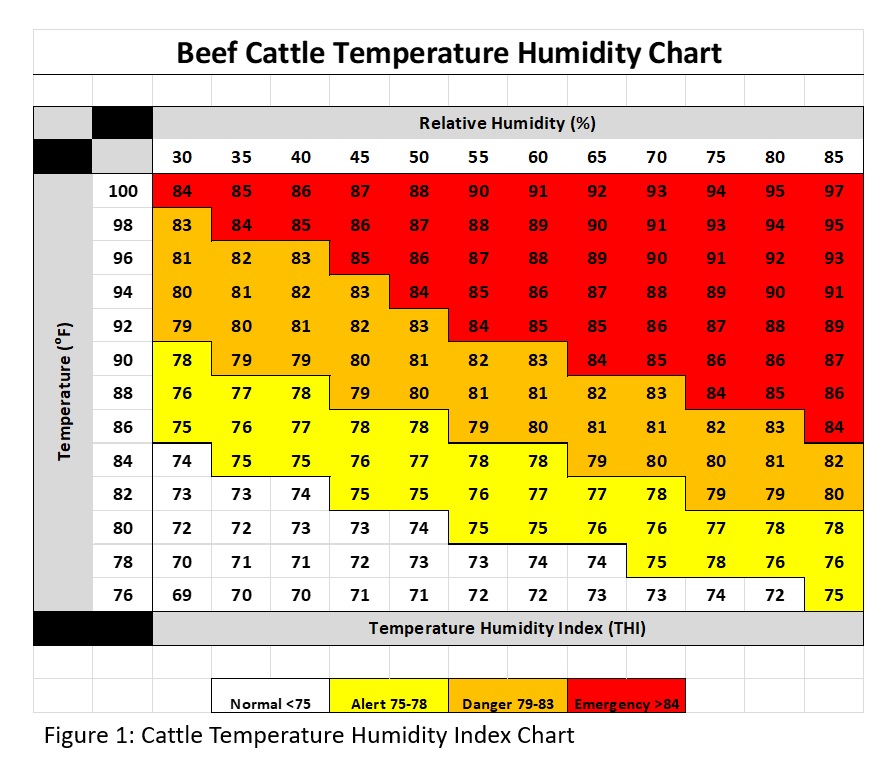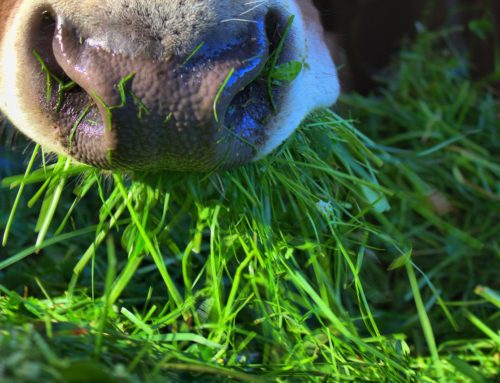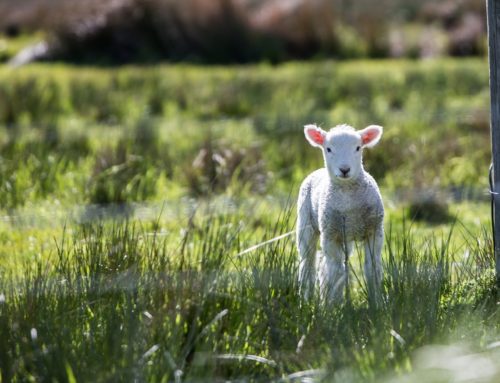As cattlemen enter the summer months, they need to understand and deal with heat and humidity. We need to consider some guidelines to help us reduce additional stress on cattle during these events and incorporate some of the following practices into our management practices.
It is first important to understand the relationship between temperature and humidity in respects to the Temperature Humidity Index (THI) or Heat Index. Figure 1: Cattle THI Chart (https://go.unl.edu/hpjy), will help to determine the risk level in planning cattle handling during the summer months. Cattlemen need to be aware of the risk based on the weather forecast of the heat stress.
Another useful resource for determining an animal’s heat load is body temperature. However, in a larger commercial setting, this is not a feasible method to determine heat stress. An alternative to this is determining an individual animal’s panting score. A panting score can be a good indicator of body temperature. As the temperature, humidity, and THI increase the panting scores will increase as well. Panting scores are determined on a scale from 0-4 and are assessed as follows (Figure 2: https://go.unl.edu/6ipa).
Handling cattle early in the mornings before temperatures get too high is always recommended. Plan to handle cattle before 8:00 a.m. and never after 10:00 a.m. during summer months. Remember that the animal’s core temperature peaks approximately two hours after the environmental temperature peaks, and takes four to six hours to lower back to normal temperature. With this in mind, you shouldn’t believe that handling cattle in the evening will reduce the risk of heat stress.
Read more: https://newsroom.unl.edu/announce/beef/8200/47172



